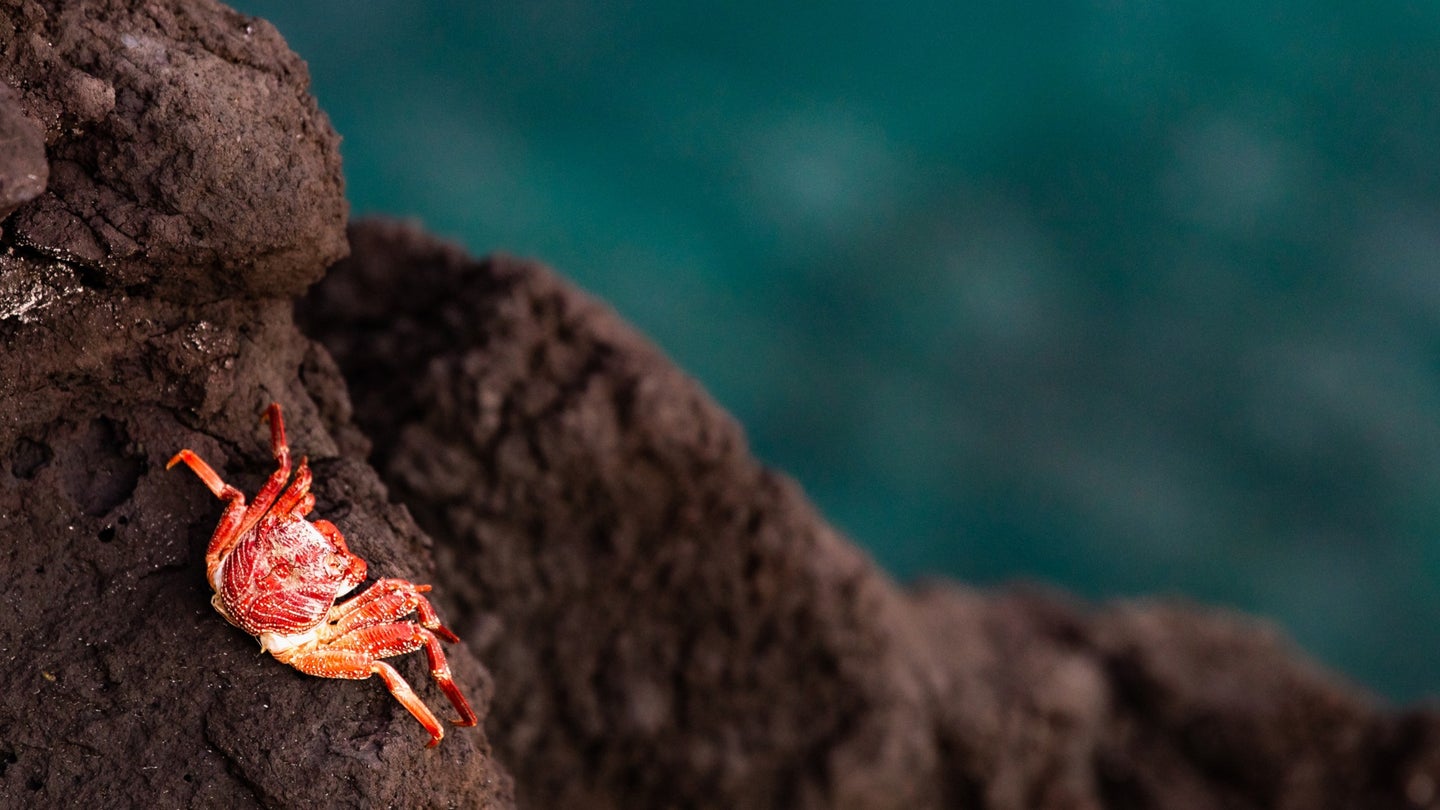
This article was originally featured on Hakai Magazine, an online publication about science and society in coastal ecosystems. Read more stories like this at hakaimagazine.com.
In 2015, scientists surveying a protected area of seafloor in the Pacific Ocean’s Clarion-Clipperton Zone (CCZ), a region known for its high concentration of the polymetallic nodules sought after by would-be deep-sea miners, came across an eerie sight: a mass grave of millions of red crabs. This many dead crabs in one place is shocking enough, but at a depth of 4,000 meters, it was a baffling find.
“It took us three or four days to actually realize that these are pelagic crabs”—animals that are supposed to be much nearer the surface—says Erik Simon-Lledó, the lead author of a paper documenting the find and a marine biologist at the United Kingdom’s National Oceanography Centre. “It is a bit embarrassing, but it [was] so unexpected. Nobody had heard of such a massive deposition in the abyss.”
While red crabs are abundant in the eastern Pacific and are noteworthy for washing up en masse on beaches in California and Baja California, Mexico, finding them at such depth in such numbers is unheard of. Even more bizarre, the grave was 1,500 kilometers offshore. This is so far from the crabs’ spawning areas off the northwestern United States that it would have taken the current at least a year to push them to the point where they eventually sank.
So many crabs drifting far offshore and sinking to the seafloor would have attracted droves of hungry predators and scavengers, so the scientists aren’t sure how the crabs remained relatively intact. Most creatures on the abyssal seafloor feed on the tiny bits of waste that fall from the surface, making these crabs, in comparison, a fantastic dinner. “Get your forks, mates, we have quality dinner now,” says Simon-Lledó with a laugh.
The researchers suspect the sheer number of crabs involved has something to do with it. Millions of crabs descending to the seafloor are simply too many to be eaten. “Swarms can have millions and millions of crabs, especially when there are perfect conditions for their development, like algal blooms or different climatic events,” explains Simon-Lledó.
The scientists can’t say whether this mass “crab fall” is just a one-off coincidence or a periodic event. Masses of millions of dead crabs do wash up on beaches every couple of years, so in principle the same could be happening in the abyss but has gone unnoticed until now. That’s Simon-Lledó’s preferred interpretation, which is supported by the fact that there were two to three times more scavengers in the crab graveyard than in the rest of the scientists’ survey area in the CCZ.
The researchers calculate that this single event represents one and a half times the carbon flux that the area would normally get in a whole year. The excess carbon will eventually make its way into the food web, supporting a richer ecosystem than we would typically imagine existing here—an ecosystem where deep-sea mining could do a great deal of damage.
The area where Simon-Lledó and his colleagues found the crabs is not being eyed for mining. But Amanda Ziegler, a researcher at UiT the Arctic University of Norway who was not involved in the study, says it is the same kind of habitat as other areas in the CCZ that do have claims for deep-sea mining. “So it is possible that this kind of crab fall [has] occurred somewhere that might also be a claim area, but that’s hard to say since it’s so difficult to assess such a big area,” she says.
Trips to the deep sea are expensive, and funding bodies often prioritize mapping a new area over returning to one that is already mapped. So the research team has not been able to return to see the aftermath of the crab fall or to see whether there have been more depositions.
“Our paper shows that there is more environmental variability than we would think in abyssal areas,” says Simon-Lledó. “It also shows how little we know about this environment that we will potentially be mining in a few years.”
This article first appeared in Hakai Magazine and is republished here with permission.
The post Millions of dead crabs ended up in the deep sea. Scientists still aren’t sure why. appeared first on Popular Science.
Articles may contain affiliate links which enable us to share in the revenue of any purchases made.
from Popular Science https://ift.tt/7kWz58X



0 Comments